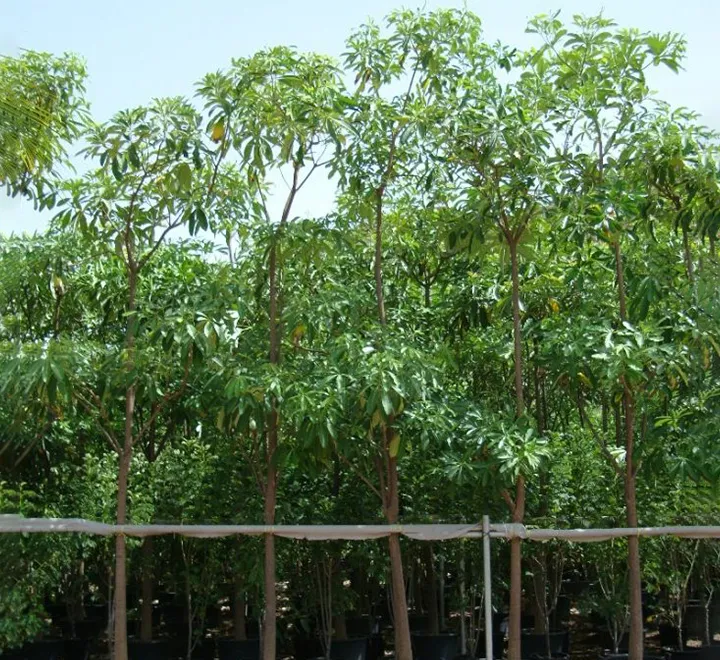Description
Alstonia scholaris, commonly known as the Indian devil tree or dita bark, is a species of evergreen tropical tree native to the Indian subcontinent, Southeast Asia, and Australia. It belongs to the family Apocynaceae. Here are some key features and care tips for Alstonia scholaris:
- Appearance: Alstonia scholaris is a tall, slender tree that can reach heights of up to 25 meters (82 feet) in its native habitat. It has a straight trunk with smooth, grayish bark and a dense, rounded crown of glossy, leathery leaves. The leaves are arranged in whorls of 4 to 6 and are elliptical or lanceolate in shape, measuring 10 to 20 centimeters (4 to 8 inches) in length. The tree produces small, white, star-shaped flowers that are fragrant and attract pollinators.
- Light Requirements: Indian devil trees thrive in full sun to partial shade. They prefer a sunny location with at least 6 hours of sunlight daily. Adequate sunlight promotes healthy growth and flowering.
- Watering: Keep the soil consistently moist but not waterlogged. Water newly planted specimens regularly until they become established. Afterward, water deeply and infrequently, allowing the top inch of soil to dry out slightly between waterings. Indian devil trees are somewhat drought-tolerant once established but benefit from regular watering during dry periods.
- Soil: Plant Alstonia scholaris in well-draining, fertile soil with a slightly acidic to neutral pH. A loamy soil enriched with organic matter works well. Ensure that the soil is loose and aerated to promote healthy root growth.
- Fertilization: Feed Indian devil trees with a balanced, slow-release fertilizer formulated for trees and shrubs in spring and late summer. Follow the manufacturer’s recommendations for application rates and frequency. Avoid over-fertilizing, as this can lead to excessive foliage growth at the expense of flowering.
- Pruning: Prune Alstonia scholaris as needed to maintain its shape and size. Remove any dead, damaged, or overgrown branches. You can also prune to promote denser growth or to shape the tree as desired. Pruning is best done in late winter or early spring before new growth emerges.
- Propagation: Indian devil trees can be propagated from seeds or by stem cuttings. Seeds should be sown in spring or early summer in well-prepared soil. Stem cuttings can be taken in spring or summer and rooted in well-draining potting mix.
- Pests and Diseases: Alstonia scholaris is relatively resistant to pests and diseases. However, it may occasionally be affected by aphids, scale insects, or fungal infections. Monitor trees regularly for signs of pests or disease and treat infestations promptly with insecticidal soap or fungicides as needed.
Indian devil trees are valued for their attractive foliage, fragrant flowers, and ornamental value. With proper care and attention to their specific needs, they can thrive in gardens, landscapes, and urban environments, providing shade, beauty, and habitat for wildlife.
Reasons to buy from Plantssouq
– Fast Delivery
– Whatsapp Us On :0566670322 Dubai
- – Support 24/7 :
* Phone/whatsup:0566670322
* Email : [email protected]






Reviews
There are no reviews yet.